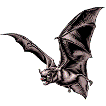Museum, University of Nebraska State

University of Nebraska State Museum: Mammalogy Papers
Document Type
Article
Date of this Version
11-29-2018
Citation
Special Publications of the Museum of Texas Tech University, Number 69.
Series Editor: Robert D. Bradley.
ISSN 0149-1768
ISBN 1-929330-36-7
ISBN13 978-1-929330-36-2
Abstract
Eight species of bat have been previously recorded from the island of Saint Lucia: Noctilio leporinus, Monophyllus plethodon, Artibeus jamaicensis, Brachyphylla cavernarum, Ardops nichollsi, Sturnira paulsoni, Molossus molossus, and Tadarida brasiliensis. Herein, we add a ninth species to the fauna—Pteronotus davyi. These nine species represent nine genera from four families: Noctilionidae, Mormoopidae, Phyllostomidae, and Molossidae. This fauna includes four trophic guilds: N. leporinus (piscivore/insectivore), M. plethodon (nectarivore/pollenivore), A. jamaicensis × schwartzi, B. cavernarum, A. nichollsi, and S. paulsoni (frugivores), and P. davyi, M. molossus, and T. brasiliensis (insectivores). Based on its geographic location, the bat fauna of St. Lucia is enigmatic in regard to species dispersal along the Lesser Antillean archipelago. Natalus stramineus and M. martiniquensis are present on Martinique immediately to the north, and Micronycteris buriri, P. fuscus, Glossophaga longirostris, and Artibeus lituratus are found on St. Vincent directly to the south, yet these six species are conspicuously absent on St. Lucia. Moreover, the St. Lucian population of Artibeus resides at the northern edge of a fascinating hybrid zone involving three species, A. jamaicensis, A. planirostris, and A. schwartzi. In light of these observations, we provide a framework for analyzing the biogeographical patterns of the regional fauna to see if there is something about St. Lucia that is unique. We posit that a number of complex geological and ecological factors account for the depauperate bat fauna observed on the island as well as the formation of the Artibeus hybrid zone in the southern Lesser Antilles.


Comments
Copyright, the authors. Used by permission.